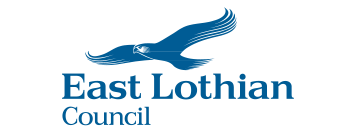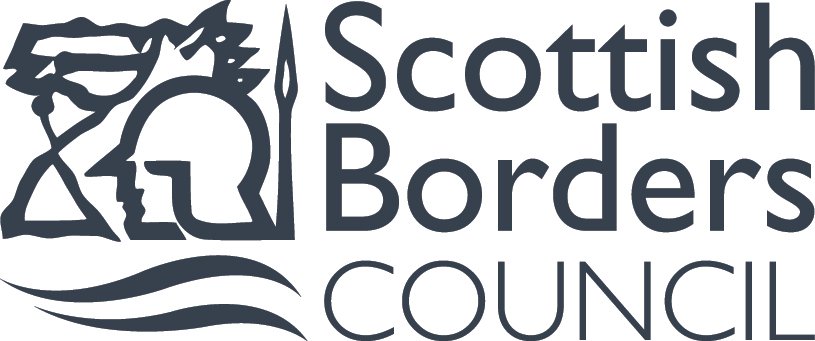Regional Energy Masterplan (REMP)
The Regional Energy Masterplan (REMP) is a strategic initiative aimed at advancing the region's transition to a low-carbon energy system. Launched in 2021, the REMP seeks to consolidate local energy-related data into a unified regional repository, facilitating informed decision-making across innovation, investment, policy, and regulation. By modelling the interdependencies within the energy system, the plan aims to assist regional partners in identifying optimal pathways to achieve deep decarbonisation cost-effectively, while promoting clean, sustainable, and inclusive growth.
Focusing initially on heat and energy efficiency, the REMP leverages Local Authorities' Low Carbon Heat Energy Efficiency Strategies (LHEES) as a foundation for preparing homes for future network integration and broader energy solutions. This approach aligns with national initiatives like Ofgem's Regional Energy Strategic Planners (RESPs) scheme, ensuring coherence in heat decarbonisation efforts.
Four component projects were identified for funding including:
Data Sharing Agreement
GIS Mapping Tool
Archetypes
Skills
These components work synergistically to provide a comprehensive understanding of the region's energy landscape, enabling stakeholders to make informed decisions to drive sustainable and inclusive growth.
-
This component was a foundational element of the REMP and focused on establishing the necessary infrastructure and agreements to facilitate effective energy data sharing across the region.
There were two primary objectives within this component:
Regional Coordination Resource: Securing a regional resource, hosted by Capital City Partnership, to connect and align energy-related activities across subsequent REMP components. This role was crucial for building momentum and scaling delivery efforts.
Data Sharing Framework: Implementing a regional data sharing approach, such as a Memorandum of Understanding, to support short- to medium-term delivery across multiple project components.
By achieving these objectives, Component A laid the groundwork for creating a multi-layered Geographic Information System (GIS) dataset during the 2024/25 period. This dataset enables partners to identify Priority Investment Areas, specific opportunities for collaborative investment derived from applying the framework across the city. In the short term, this initiative is driven by local authorities' statutory obligations under the Local Heat & Energy Efficiency Strategies (LHEES), and it also aims to influence business cases for energy system operators within the region.
Ultimately, Component A facilitated a multi-year data-sharing agreement that supports medium-term ambitions and prevents the need to repeat this process in future phases of the Regional Energy Masterplan.
-
The GIS Mapping Tool was a pivotal element of the REMP. Led by the Edinburgh Climate Change Institute (ECCI), this component focused on developing a comprehensive Geographic Information System (GIS) mapping tool to support the region's transition to a low-carbon future.
Building upon a similar tool previously developed for the City of Edinburgh’s Net Zero Edinburgh Leadership Board, the GIS mapping tool was scaled to encompass the broader city region, including Edinburgh, Fife, East Lothian, West Lothian, Midlothian, and the Scottish Borders. The tool integrated diverse datasets covering networks, assets, energy supply and demand, transport, adaptation, biodiversity, and future investments.
The project involved collecting both public and private data from local authority partners and utility companies such as Scottish Power Energy Networks (SPEN), SGN, and Scottish Water. The ECCI developed:
A public GIS map for general accessibility.
A private GIS map containing confidential data.
A comprehensive metadata catalogue including a Spatial Data List and Data list with meta & methodologies.
These maps were created using ArcGIS Online, with data primarily hosted by the ECCI. Where partners already had data hosted in ArcGIS Online, collaborative partnerships were established to facilitate data sharing.
The GIS mapping tool provided a visual narrative of the current state of infrastructure and projected developments, aiding stakeholders in understanding the region's progress toward net zero goals. This initiative also laid the groundwork for identifying Priority Investment Areas, enabling targeted collaborative investments and informing business cases for energy system operators within the region.
-
The archetypes project was a key initiative of the REMP focussing on developing a strategic framework to support the decarbonisation of the region's housing sector, particularly social housing, by 2045.
The project began by classifying housing stock across the Edinburgh & South East region into distinct archetypes. These archetypes were based on parameters such as wall construction method, property age, and type, providing a structured overview of the housing stock. This classification enabled the development of targeted retrofit strategies tailored to different building types, facilitating strategic, cost-effective, and scalable energy efficiency upgrades across the region.
Building on this foundation, the project identified specific retrofit interventions for each archetype, drawing from existing pilot studies and case studies. In some cases, consultants and architects were procured to conduct detailed assessments of interventions for selected archetypes. The methodology was then replicated and refined to develop additional pattern books and Zero-Emission Domestic Energy Heat (ZDEH) guides for other archetypes in the city region, including non-domestic and more complex buildings such as historic properties. These guides included expected costs for retrofitting different archetypes, providing valuable resources for planning and implementation.
To support local authorities and stakeholders, public guidance documents were developed, offering content and structure for implementing retrofit strategies. These documents were professionally designed with enhanced graphics, figures, and charts, and were accompanied by dedicated webpages to host the materials, ensuring accessibility and usability.
The insights and methodologies developed through Component D have broader applicability beyond the region. By sharing learnings with wider stakeholders, the archetype approach can support the roll-out of energy efficiency and heat decarbonisation measures across Scotland and the UK.
Download the Archetype Retrofit Delivery and Methodology Report [PDF]
Book time with Julio Bros-Williamson: Civil Engineering - 4th Year Cohort Lead Bookable time
-
Scotland's journey to Net Zero by 2045 requires a significant transformation in its workforce, particularly in the areas of heat decarbonisation and building retrofitting. Recognising this, the REMP initiated a comprehensive, three-phase Skills Gap Assessment project. Led by The Verdancy Group, experts in sustainability training, this initiative evaluated the current skills landscape, identified critical gaps, and developed actionable strategies to equip the workforce with the necessary competencies.
Through extensive collaboration with industry experts, educational institutions, and policymakers, the project aligned training programmes with national policies like the Local Heat and Energy Efficiency Strategies (LHEES).
The following sections outline the three phases of the project.
Phase 1: Skills Landscape Evaluation and Gap Analysis
In this initial phase, the project assessed Scotland's current workforce capabilities in retrofit and heat decarbonisation, including:
Identifying essential skills required for large-scale retrofit projects.
Evaluating existing training programmes and educational pathways.
Assessing the capacity of educational institutions and awarding bodies.
Engaging with stakeholders to gather insights and ensure alignment with national policies like the Local Heat and Energy Efficiency Strategies (LHEES).
The findings in the report outline recommended qualifications and strategic recommendations for curriculum development.
Building Scotland’s Low-Carbon Workforce: Strategic Recommendations for Curriculum Development [PDF]
Phase 2: Qualification Development and Strategic Planning
Building upon Phase 1, this phase focussed on refining the recommendations and developing a roadmap for enhancing Scotland’s training infrastructure. Key objectives include:
Producing detailed reports for each proposed qualification, including content specifications, recommended awarding bodies, learning outcomes, training pathways, development costs, and timelines.
Securing commitments from strategic leads to support delivery.
Defining qualification priorities in line with local authority and college strategies.
Establishing a timeline for developing identified priority qualifications.
These efforts aim to ensure the education system meets the evolving needs of the retrofit sector and supports Scotland's transition to Net Zero.
REMP - Thematic Qualification Report [PDF]
Thematic Qualification Report 1 - Project Management and Coordination [PDF]
Thematic Qualification Report 2 - Assessment and Design [PDF]
Thematic Qualification Report 3 - Installation and Technical Expertise [PDF]
Thematic Qualification Report 4 - Technical and Advisory Roles [PDF]
Thematic Qualification Report 5 - Evaluation and Quality Assurance [PDF]
Thematic Qualification Report 6 - Community Engagement and Emerging Roles [PDF]
Phase 3: Curriculum Testing and Implementation
The final phase involves piloting the developed qualifications through the Curriculum Test and Design Programme for Insulation and Building Treatments, with a focus on the Edinburgh and South East Scotland region. Key components include:
Delivering accredited training to 10 learners, combining online theory, in-person workshops, and hands-on assessments.
Providing enhancement workshops and toolbox talks on key skills like insulation installation and energy-efficient retrofitting.
Supporting businesses to comply with industry standards and access government funding schemes such as ECO and Home Energy Scotland.
Collaborating with organisations like the Energy Saving Trust and Warmworks to align the programme with national objectives.
Sharing insights with the Scottish Qualifications Authority (SQA) to inform future qualification development.
This phase aims to upskill the workforce and support businesses in contributing to Scotland's Net Zero 2045 goals.








